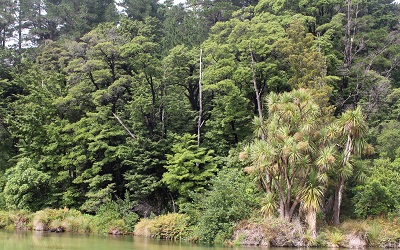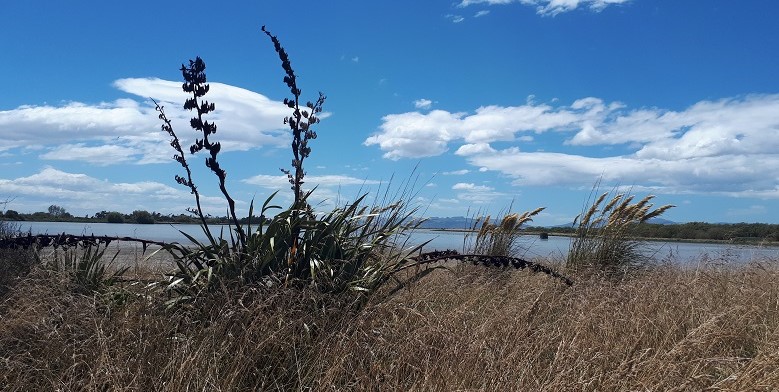SNAs and Covenants
In this section
Significant Natural Areas (SNAs)
District Councils throughout New Zealand are tasked through the Resource Management Act 1991 (RMA) with protecting significant indigenous vegetation and significant habitats of indigenous fauna in their areas.

Section 6 of the RMA, Matters of national importance, states that:
"all persons exercising functions and powers under it, in relation to managing the use, development, and protection of natural and physical resources, shall recognise and provide for the following matters of national importance:”
One such matter is item (c) the protection of significant indigenous vegetation and significant habitats of indigenous fauna.
Selwyn District Council sets objectives and policies to implement these requirements in our Operative District Plan - and the recently notified Proposed District Plan.
Objective B1.2.1 of the Operative Plan states that:
“Significant areas of indigenous vegetation and habitats of indigenous fauna are recognized and protected and enhancing areas of indigenous vegetation is encouraged“
Objective EIB-01 of the Proposed District Plan states:
Indigenous biodiversity within the district is managed through the exercise of kaitiakitanga and stewardship, in order that:
- Areas of significant indigenous vegetation and significant habitats of indigenous fauna are protected to ensure no net loss of indigenous biodiversity, and
- Other indigenous biodiversity values are maintained and enhanced, and
- The restoration and enhancement of areas of indigenous biodiversity is encouraged and supported.
Policy EIP-P1 of the Proposed District Plan states:
Schedule in the District Plan areas of significant indigenous vegetation and significant habitats of indigenous fauna by applying the criteria and determining significance as set out in EIB-SCHED1, and identify these significant natural areas on the Planning Maps and in EIB-SCHED4, where as agreed by the landowner.
Identifying and protecting these sites and others (including Covenants) is done in partnership with willing landholders. Some of the sites for our SNA program were identified through an ecological survey of the Canterbury plains in 1996, as part of the Protected Natural Areas Programme (PNA) to identify natural ecosystems worthy of protection in more modified parts of New Zealand’s landscape.
 Positive outcomes for biodiversity have resulted from us working with landowners to identify and protect indigenous vegetation. One such outcome is a landowner covenanting with the QEII National Trust. Landowner Tricia Crumpton explains "We found out how rare this plant is during a Selwyn District Council biodiversity workshop. With the council’s help we are restoring the native vegetation and controlling exotic invaders. The covenants certainly look different from the surrounding manicured land."
Positive outcomes for biodiversity have resulted from us working with landowners to identify and protect indigenous vegetation. One such outcome is a landowner covenanting with the QEII National Trust. Landowner Tricia Crumpton explains "We found out how rare this plant is during a Selwyn District Council biodiversity workshop. With the council’s help we are restoring the native vegetation and controlling exotic invaders. The covenants certainly look different from the surrounding manicured land."
Olearia adenocarpa. Photo: Ian Platt
An SNA site assessment is done by an appropriately skilled person. Appendix 3 of the Canterbury Regional Policy Statement (RPS), and EIP-SCHED1 of the Proposed Selwyn District Plan sets out four criteria to be used to determine ecological significance under Section 6(c) of the RMA (1991). According to the guidelines, a site is considered to be ‘significant’ if it meets one (or more) of the four criteria below.

Criteria:
- Representativeness
- Diversity and Pattern
- Rarity/Distinctiveness
- Ecological Context
Te Waihora / Lake Ellesmere
We provide advice, support and funding though the Selwyn Natural Environment Fund (SNEF) to assist landholders with protection and management of their significant indigenous biodiversity, and SNAs are given top priority for funding. As at April 2020, 73 Selwyn sites covering many different habitats (dryland, wetland, forest remnants) have been confirmed as SNAs.
Covenants
There are a number of ways private landowners can legally safeguard ecologically important areas on their land; placing a covenant on the land is one such option.
Landowners can enter into a covenant with the Department of Conservation, Queen Elizabeth II National Trust and some local authorities. A covenant is a legal agreement between the landholder and the covenanting agency about how the area’s natural values will be protected (e.g., where fencing is needed and whether public access will be allowed). The landowner still retains ownership and the covenant is registered against the title, usually in perpetuity and is binding on future owners.

Both parties manage the covenanted land in accordance with the agreement, and the covenanting agency may provide specialist advice. Financial assistance may also be available to the landholder, usually for a survey, legal and fencing costs. Local authorities may also offer rates relief on covenanted areas. Those with covenanted land can apply to the SNEF fund to help with fencing and weed control and other associated costs.
The are four main options for achieving legal protection on private property:
- QEII National Trust covenant
- Department of Conservation
- Ngā Whenua Rāhui (Kawenata - Maori land)
- Local authority covenant
The Banks Peninsula Conservation Trust also works with landholders to legally protect important biodiversity and landscapes on Banks Peninsula.